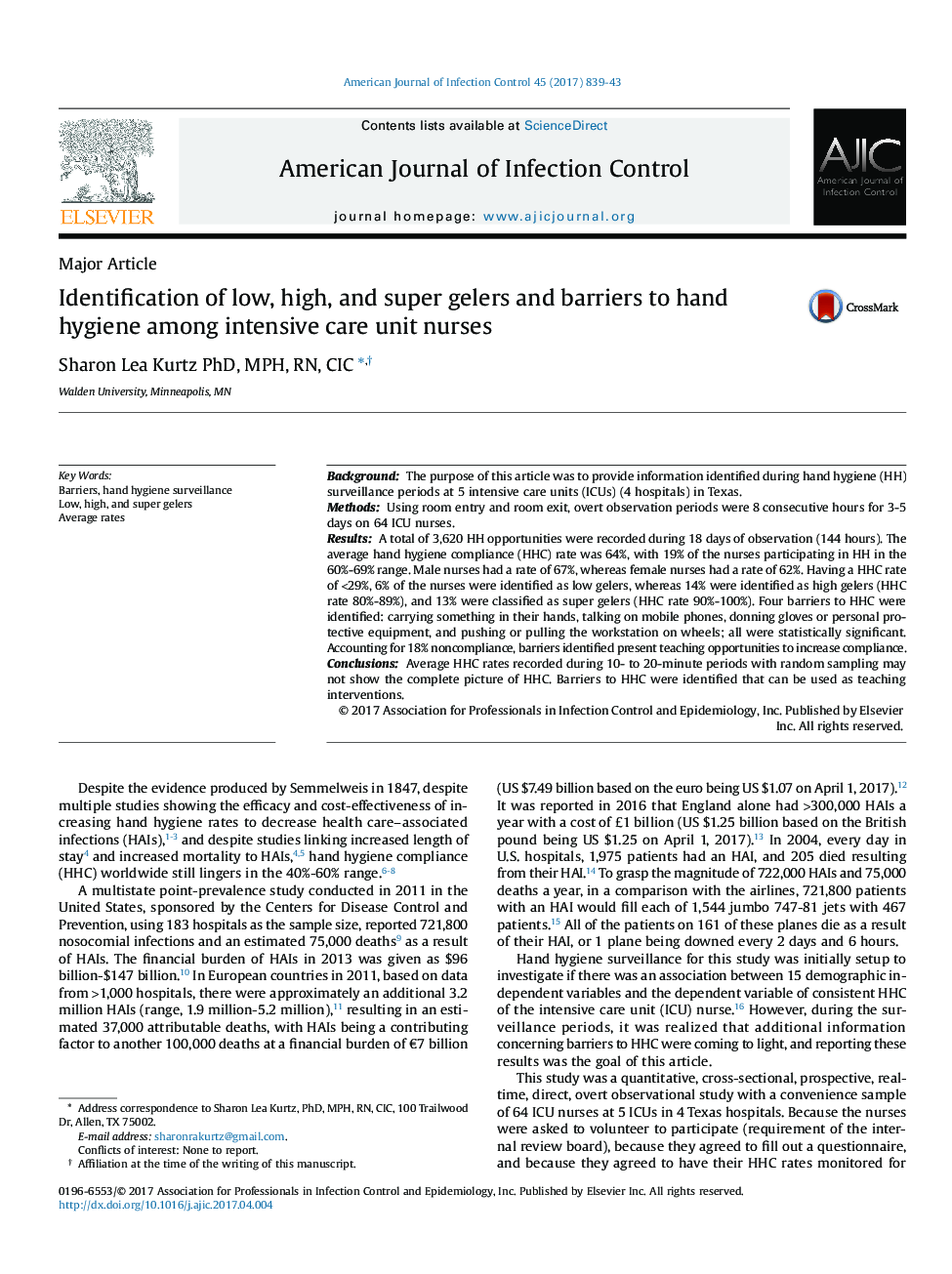| Article ID | Journal | Published Year | Pages | File Type |
|---|---|---|---|---|
| 5566205 | American Journal of Infection Control | 2017 | 5 Pages |
•Intensive care unit nurses noncompliant with hand hygiene 18% of time because of 4 barriers.•Barriers included carrying something, using phone, gloving, and pushing or pulling workstations.•Low (<29% hand hygiene compliance [HHC]), high (80%-89% HHC), and super gelers (90%-100% HHC) were identified.•Call for standardized definitions for hand hygiene surveillance.
BackgroundThe purpose of this article was to provide information identified during hand hygiene (HH) surveillance periods at 5 intensive care units (ICUs) (4 hospitals) in Texas.MethodsUsing room entry and room exit, overt observation periods were 8 consecutive hours for 3-5 days on 64 ICU nurses.ResultsA total of 3,620 HH opportunities were recorded during 18 days of observation (144 hours). The average hand hygiene compliance (HHC) rate was 64%, with 19% of the nurses participating in HH in the 60%-69% range. Male nurses had a rate of 67%, whereas female nurses had a rate of 62%. Having a HHC rate of <29%, 6% of the nurses were identified as low gelers, whereas 14% were identified as high gelers (HHC rate 80%-89%), and 13% were classified as super gelers (HHC rate 90%-100%). Four barriers to HHC were identified: carrying something in their hands, talking on mobile phones, donning gloves or personal protective equipment, and pushing or pulling the workstation on wheels; all were statistically significant. Accounting for 18% noncompliance, barriers identified present teaching opportunities to increase compliance.ConclusionsAverage HHC rates recorded during 10- to 20-minute periods with random sampling may not show the complete picture of HHC. Barriers to HHC were identified that can be used as teaching interventions.
